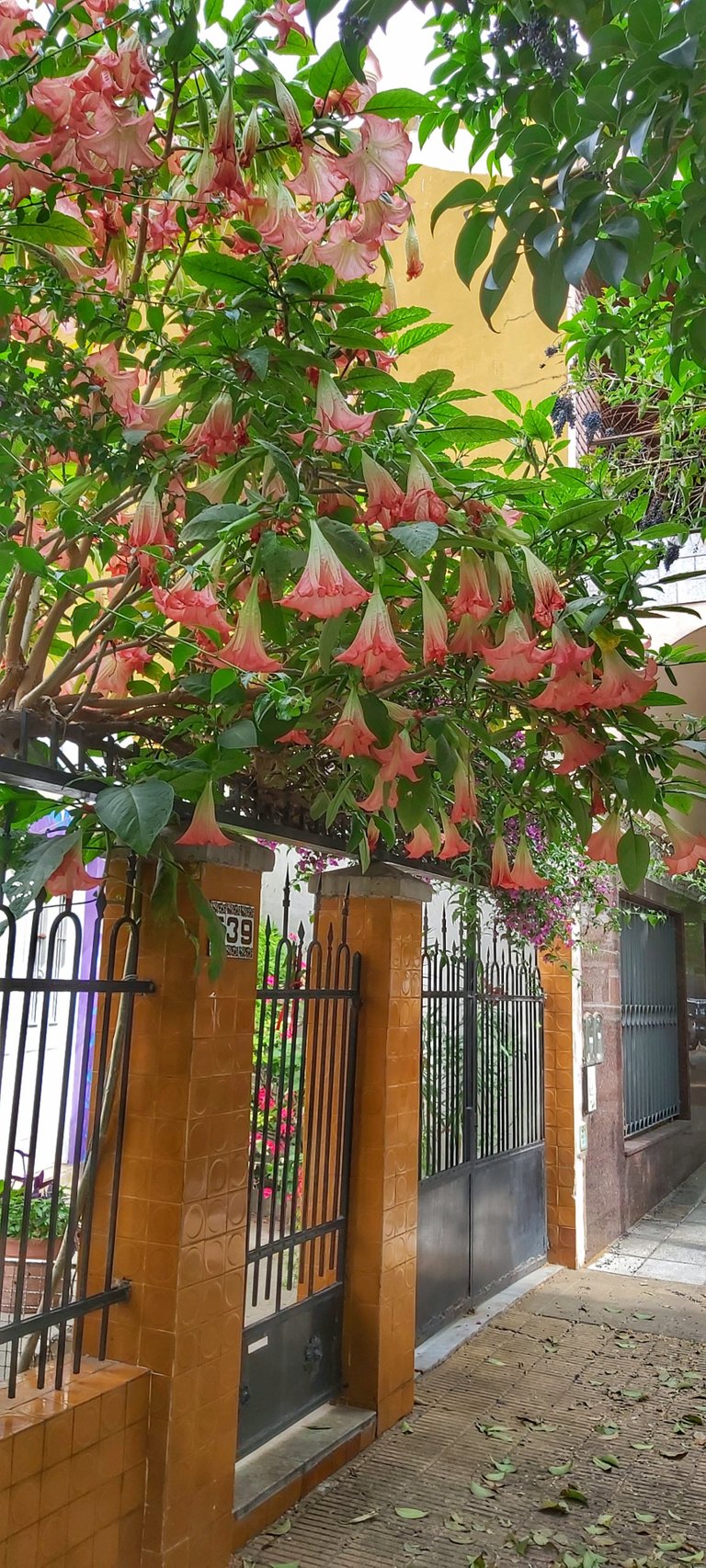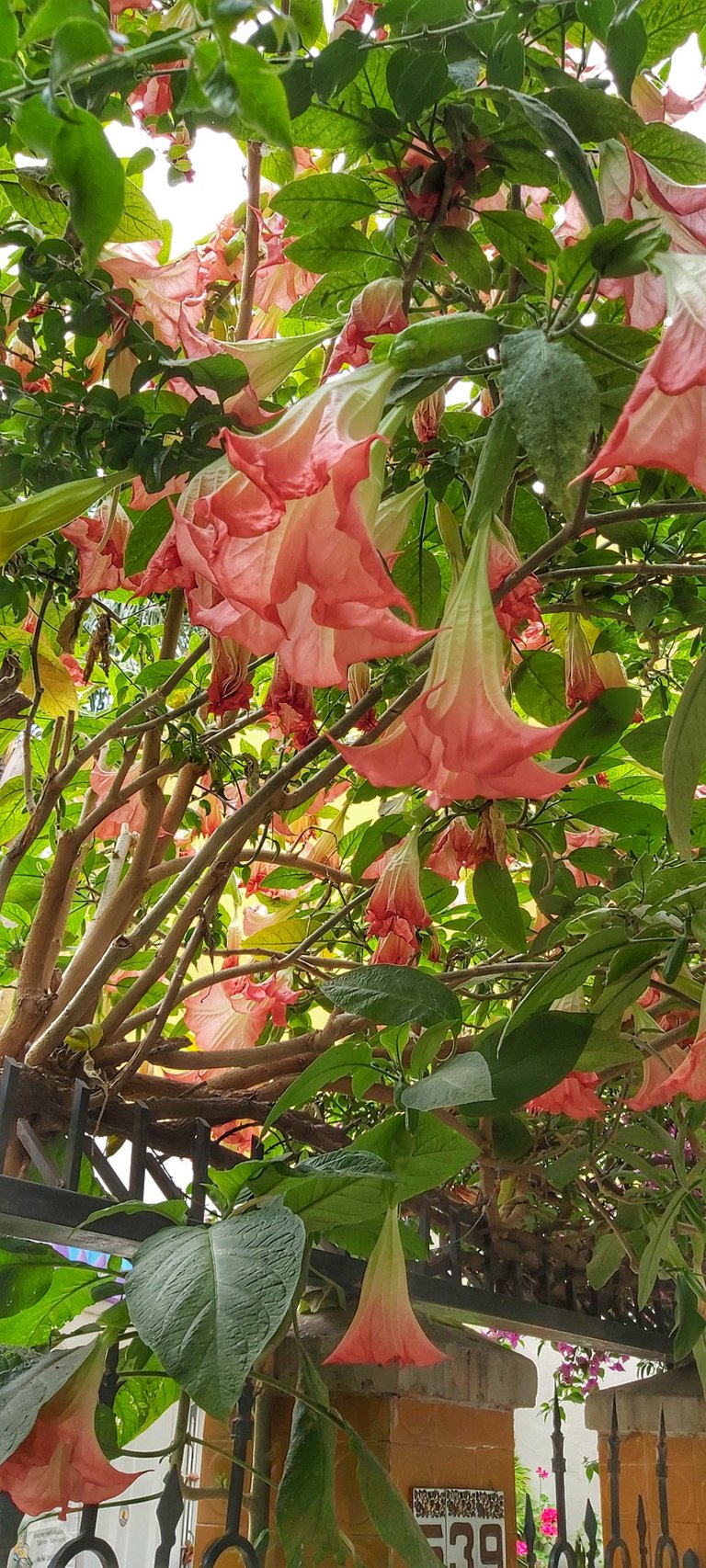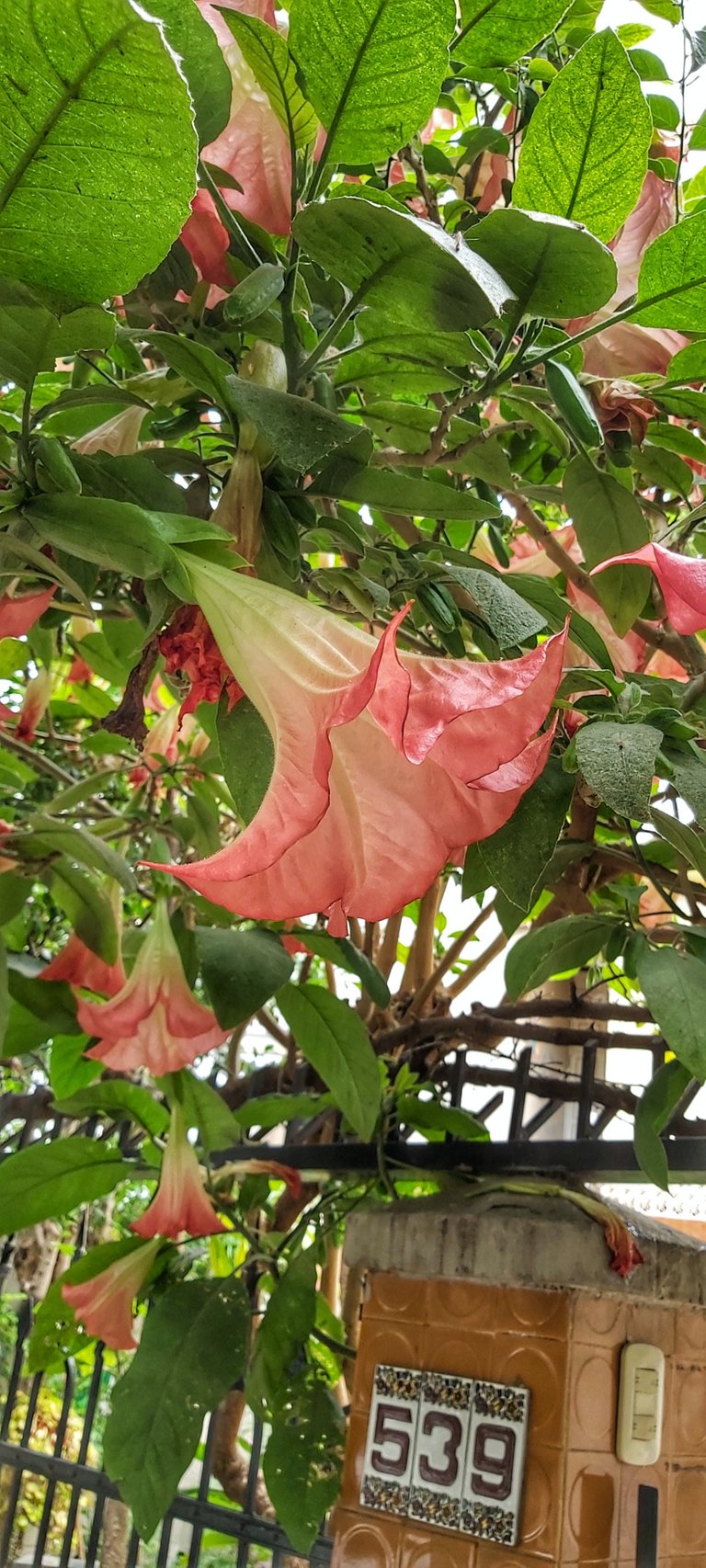
I do not remember who was the first person who spoke to me about the harmful effects that this plant has on people's health, I think it was my wife who, although she is just a fan, knows a lot about plants and flowers, because she likes them a lot because He cultivates and pampers them like few people.
The matter happened to be one of those so-called "urban legends", rumors and news very little checked but that after being transmitted so much between the people they become absolute truths although on repeated occasions there are different versions, even sometimes contradictory.
On this particular plant, I believed that it is precisely that, a legend or myth of the neighbors without any scientific support. It was something that I did not give too much importance to until I came across a story in a Chilean newspaper on a fishing vacation that I do quite often to that neighboring country.

The news mentioned the death of a young man from intoxication with “Floripondio”, which is the common name by which this variety of Brugmansia is known, and the name derives from the size of its flower, well above the traditional average of any plant.
A few hours ago walking through the neighborhood I found a couple of houses where this plant grows abundantly, the photographs exempt me from further comments.
I searched the internet about the antecedents and it does have hallucinogenic substances and is a powerful alkaloid with cardiotoxic effects that can irreversibly damage the nervous system, of course, its effects are different depending on the age and physical condition of the user. The greatest danger is in the use without sufficient knowledge of its doses and effects, in addition, the concentration of the alkaloid varies according to the area of the plant, it is not the same to consume the flower, the stem or the leaves and if the selected measure is large the effects can be devastating, even to death. It is generally consumed as an infusion: it is boiled in water and then the tea is drunk.

It caught my attention that this plant can still be found in the gardens of the houses and that there is not at least one preventive action of information from the authorities to the owners of it.
Obviously, this plant does not have a good history and we must take care of ourselves and our relatives and neighbors.

No recuerdo quien fue la primera persona que me habló sobre los efectos nocivos que esta planta tiene sobre la salud de las personas, creo que fue mi esposa que aunque es solo una aficionada, conoce bastante de plantas y flores, porque le gustan mucho, porque las cultiva y mima como pocas personas.
El asunto pasó por ser una de esas llamadas “leyendas urbanas”, rumores y noticias muy poco chequeadas pero que de tanto ser trasmitidas entre la gente pasan a ser verdades absolutas aunque en reiteradas ocasiones existen versiones diversas, incluso contradictorias.
Sobre esta planta en particular yo creí que se trataba justamente de eso, de una leyenda o mito de los vecinos sin ningún asidero científico. Fue algo a lo que no di demasiada importancia hasta que me topé con una noticia en un diario chileno en unas vacaciones de pesca que realizo con bastante frecuencia a ese país vecino.
La noticia mencionaba la muerte de un joven por intoxicación con “Floripondio”, que es el nombre común con el que se conoce a esta variedad de Brugmansia, y el nombre deriva del tamaño de su flor, bastante por encima de la media tradicional de cualquier planta.
Hace pocas horas paseando por el barrio encontré un par de casas donde esta planta crece y de forma abundante, las fotografías me eximen de mayores comentarios.
Busqué en internet sobre los antecedentes y efectivamente posee sustancias alucinógenas y es un poderoso alcaloide con efectos cardiotóxicos que puede dañar irreversiblemente el sistema nervioso, por supuesto sus efectos son distintos dependiendo de la edad y condición física del que la consume. El mayor peligro está en el empleo sin el conocimiento suficiente de sus dosis y efectos, además la concentración del alcaloide varía según la zona de la planta, no es lo mismo consumir la flor, el tallo o las hojas y si la medida seleccionada es grande los efectos pueden ser devastadores, hasta llegar a la muerte. Generalmente se la consume en infusión: se hace hervir en agua y luego se toma el té.
Me llamó la atención que aún se pueda encontrar esta planta en los jardines de las casas y que no haya al menos una acción preventiva de información de las autoridades a los poseedores de la misma.
Evidentemente esta planta no tiene buenos antecedentes y hay que cuidarse y cuidar a nuestros familiares y vecinos.
Las fotografías son de mi propiedad excepto las que menciono la fuente.
The photographs are my property except those mentioned by the source.
Héctor Gugliermo
@hosgug